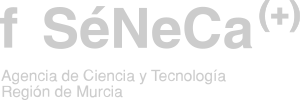The process started off with the identification of the relationship between areas and competences of both European models, resulting into the EmDigital model which combines the dimensions of entrepreneurship with the dimensions of digital competence. This analysis was completed with the proposals of competences and abilities of entrepreneurship made by other authors.
The Model
The model is based on the establishment of relationships between the European Entrepreneurship Competence Framework EntreComp and the European Digital Competence Framework for Citizens DigCom 2.1.

C1.1. Development of searches implementing information organization and management mechanisms. C1.2. Identification of entrepreneurship needs or opportunities within a virtual or based-on-technologies face-to-face environment. C1.3. Assessment of limitations, opportunities, and risks of the potential entrepreneurship with technologies.
C2.1. Specification of the most adequate digital contents and tools to respond to the possibilities found. C2.2. Specification of ideas and opportunities in a creative manner.
C3.1. Exploration of the real possibilities of the development and implementation process of ideas within an immediate future term.
C4.1. Enhancement of the participation of other professionals providing the necessary support to the development of the idea. C4.2. Creative design of a digital entrepreneurship plan and its update, according to the ideas provided by the work team. C4.3. Estimate of the costs of the proposals made. C4.4. Design of inclusive and sustainable entrepreneurship proposals.
C5.1. Creation of online communication spaces for the involved individuals to contribute and assess new ideas. C5.2. Mobilisation of human resources to make and idea become a product. C5.3. Management of decisions and strategies of development offered by users to persuade other mates and determine new actions. C5.4. Communicate news of actions to mates/users and train them on interest areas, such as financial education, economy, etc.
C6.1. Creation of digital identities according to their role to protect the reputation and deal adequately the data spread and disseminated online. C6.2. Assessment of the protection possibilities and projection of the professional digital identity in the entrepreneurship proposals established. C6.2. Establishment of a netlabel, both at a general and specific level addressed to target population of the entrepreneur proposal.
C7.1. Set up of processes creating value. C7.2. Development and usage of digital channels and contents to enhance participation and collaboration of different agents. C7.3. Management of the different digital identities and the data provided by each one of them to facilitate negotiation and effective communication processes.
C8.1. Collaboration and team work to develop and implement the idea through different technologies. C8.2. Interaction between two or more people privately or publicly to discuss aspects related with the proposal through digital devices. C8.3. Share the information and the developed digital content with others. C8.4. Knowledge of virtual behaviour rules to cover personal needs and attain goals in the most effective possible fashion.
C9.1. Collection and management of materials and resources to create or update digital value in different formats (multimedia, texts, data, etc.) and available for several electronic devices. C9.2. Interaction with others to create, integrate and re-elaborate digital content.
C10.1. Taking charge and commit with people (people, institutions) involved in the developed plan. C10.2. Authorship declaration of the published information and digital content and presentation of the licenses each product has online. C10.3. Application of an online behaviour and interaction facilitating communication in favour of the attainment of social, cultural, and/or economic goals.
C11.1. Error proofing and improvement proposals using digital tools to find out new opportunities. C11.2. Be able to transform success and fail into a learning opportunity; control of frustration. C11.3. Improvement of digital entrepreneurship based on strategies to study its performance. An example would be the application of a performance key indicator.
C12.1. Identification and solution of any kind of problem (technical, communicative, related with management…) involved in the action. C12.2. Selection and usage of the most adequate resources to find solutions, implement them and assess them collaboratively. C12.3. Programming (planning and development of instructions sequences) to solve problems happening before or during the process.
C13.1. Monitoring of the compliance with the programmed updates within the estimated deadlines. C13.2. Management of the data and information gathered. C13.3. Effective and quick action against unexpected events happening during the development and implementation process of an idea.
C14.1. Pro-environmental commitment and reduction of the impact the proposal might have on the environment. C14.2. Development of improvements for the implemented proposal to be always updated. C14.3. Development of an online identity supported on ethical and responsible criteria. C14.4. Attention to basic online safety aspects and guarantee confidentiality of the entrepreneurship proposals implemented. C14.5. Attention to basic aspects on participants’ privacy.
C15.1. Perseverance on deficiency identification and ability to set innovative and digital proposals to overcome them. C15.2. Self-trust and motivation to offer the most adequate technological responses.
Two particular aspects of the EmDigital model are, on the one hand, its sequential structure, since it presents the dimensions and competences as they should be developed in order to design and implement an entrepreneur action; on the other hand, the formulation of 46 indicators specifying the practical application of digital entrepreneurship competences.


